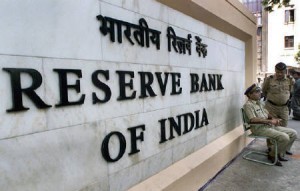The index of industrial production is aimed at reflecting changes (increase or decrease) in the volume of industrial production (i.e., production of non-agricultural commodities) in a given period compared to some base period. These indices measure, at regular intervals, the given general movement in quantum of industrial production. Such indices are useful for studying:
- The progress of general industrialisation of a country, and
- The effect of tariff on the development of particular industries.
These indices of industrial activity are of great importance in the formulation and implementation of industrial plans. For the construction of the indices of industrial production, the data about production of various industries are usually collected under the following heads:
(i) Textile Industries: Cotton, silk, woollen, etc.
(ii) Metallurgical Industries: Iron and steel, etc.
(iii) Mining Industries: Coal, pig-iron and ferro alloys, petrol, kerosene, copper (virgin metal), etc.
(iv) Mechanical Industries: Locomotives, sewing machines, aeroplanes, etc.
(v) Industries subject to exercise duty: Tea, sugar, cigarettes and tobacco, distilleries and breweries, etc.
(vi) Electricity, gas and steam: Electric lamps, electric fans, electrical apparatus and appliances, etc.
(vii) Miscellaneous: Glass, paints and varnish, paper and paperboard, cement, chemicals, etc.
The weights may be assigned to various industries on the basis of, say, capital invested, net output, production etc. the concept of ‘value added by manufacture’ is the most commonly used criterion for determining the weights to be assigned to different industries.
- Indian Scenario
The Central Statistical Organisation (CSO) is responsible for compilation and publication of the index of industrial production in India. This is a monthly index and is intended to measure changes over time in the volume of industrial production. It has been revised from time to time by shifting the base with respect to which the comparison is done to a recent period, by reviewing the coverage of items and industries, and by improving as far as possible, the techniques of compilation with q view to reflect adequately the industrial growth. When the index was commenced in India, the base year adopted was 1946 and this was revised successfully to 1951, 1956, 1960, 1970, 1980-81 and 1993-94.
Interim Index of Industrial Production (Base 1946=100). This official index number of industrial production using 1946 as base year was started by the office of the Economic Adviser, Ministry of Commerce (now in Ministry of Industry), Government of India from January 1949 and consisted of 20 items covering mining and manufacturing, the ‘value added by manufacture’ as obtained from the First Census of Manufacturers, 1946 was used for determining the weights to be assigned to different items.
Revised Index of Industrial Production (Base: 1951=100). Due to certain shortcomings, the interim index of industrial production was discontinued in April 1956 and was replaced by the ‘revised index of industrial production’ which used 1951 as base year and consisted of 88 items. The classification of items in this index was according to the International Standard Industrial Corporation (I.S.I.C.) of all Economic Activities and the various industries have been divided into Divisions, Major Groups and items & sub-items of Major Groups. For this index, industries were classified as follows:
- Mining and Quarrying Division with 2 major groups,
- Manufacturing Division with 17 major groups,
- Electricity, Gas and Steam Division with 1 major group.
Indices of Industrial Production with 1956 and 1960 as Base Years. On the basis of recommendations of the Working Group appointed by the Central Statistical Organisation (C.S.O.), the revised index of industrial production with 1951 as base was replaced in July 1962 by the index with 1956 as base and covering 201 items of production, classified according to the ‘National Classification of all Economic Activities’ published by C.S.O.
Index of Industrial Production with 1970 as Base. The latest revised series of index numbers of industrial production with the base 1970=100 constructed by Central Statistical Organisation, New Delhi, takes into account the structural changes that have taken place since 1960 (last time the index was revised) in the industrial sector. The 1970 base indices are being issued since March, 1975, for the revised series, selection of items for the manufacturing group was based of 2 criteria, viz.,
(i) regularity in monthly reporting of production data, and
(ii) importance of the item, judged by the value of gross annual production/value added.
The year 1970 was chosen as the comparison base on account of its nearness to the reference period chosen for a number of other official series, like the wholesale price index, security price index, consumer price index, etc. The weights were assigned to different industry groups according to the summary tabulations of Annual Survey of Industries (ASI)-1970, while item-level weights within an industry group were based on the detailed tabulations of ASI-1968.
Index of Industrial Production (Base: 1980-81=100). The 1980-81 base series of indices were released in February 1987. Note that, though the total number of items covered in 1980-81 base series is same (352) as in 1970 base series, the allocation of weights in the three sectors is different. Moreover, 99 items had been newly added while 95 had been dropped.
In revising the series to the base 1980-81 slight departure has been made to use gross value added instead of net value added for distribution of weights. This is to keep in line with international practice, as suggested by United Nations Statistical Office (UNSO). The figures of gross value added were obtained from the summary results of Factory Sector of ASI 1980-81, up to the ultimate digital level of classification.
Current series of IIP (Base 1993-94=100). As the structure of the industrial sector changes over time, is it necessary to revise the IIP from time to time, so as to measure the real growth in the industrial sector. On the recommendation of the Technical Advisory Committee (TAC), set up in June, 1995, the series of IIP (1980-81=100) was revised by shifting the base to 1993-94.
- 1. Scope and Coverage. The scope of the index has been limited to mining, manufacturing and electricity sectors and it does not cover gas, water supply and construction.
- 2. Items in Basket. In this series, the items have been selected, (as recommended by TAC), on the criteria that each item should generally account for at least Rs.80 crore of Gross Value of Output at the overall manufacturing sector level and Rs.20 crore of Gross Value added as the ultimate digit level of NIC. The items basket so identified captured about 80% of the output of the manufacturing sector, as recommended by TAC.
- 3. Weighting Diagram. Following the recommendations of the TAC, the issue of using Gross Value Added (GVA) and Gross Value of Output as a criteria for allocation of weights in compilation of revised series of IIP was deliberated in different forums including a Special Committee. It was recommended that GVA may be used for allocation of weights in the revised series of IIP with base 1993-94, just for the sake of continuity consistency, the international practices and the UN recommendations on the subject.
- 4. Source of Data. For the 1980-81 series, CSO obtained monthly production data from as many as 18 source agencies who collect data from the production units. For the revised series with base as 1993-94, the same set of 14 source agencies have been retained except for Railways, for which the consolidated data was supplied by the Railway Board instead of the data being supplied earlier by 5 agencies. In terms of the number of items covered, the largest source is the Department of Industry Policy and Promotion (DEIP & P), which supplies relating to Mining and Quarrying sector is being supplied by the Indian Bureau of Mines, Nagpur. This is combined with manufacturing and electricity indices compiled by CSO to arrive at the General Index of Industrial Production. The data on electricity sector is furnished by the Central Electricity Authority (CEA).
Click here for government certification in Accounting, Banking & Finance





4 Comments. Leave new
Well written!
Great efforts..
Good Efforts 😀
(y)